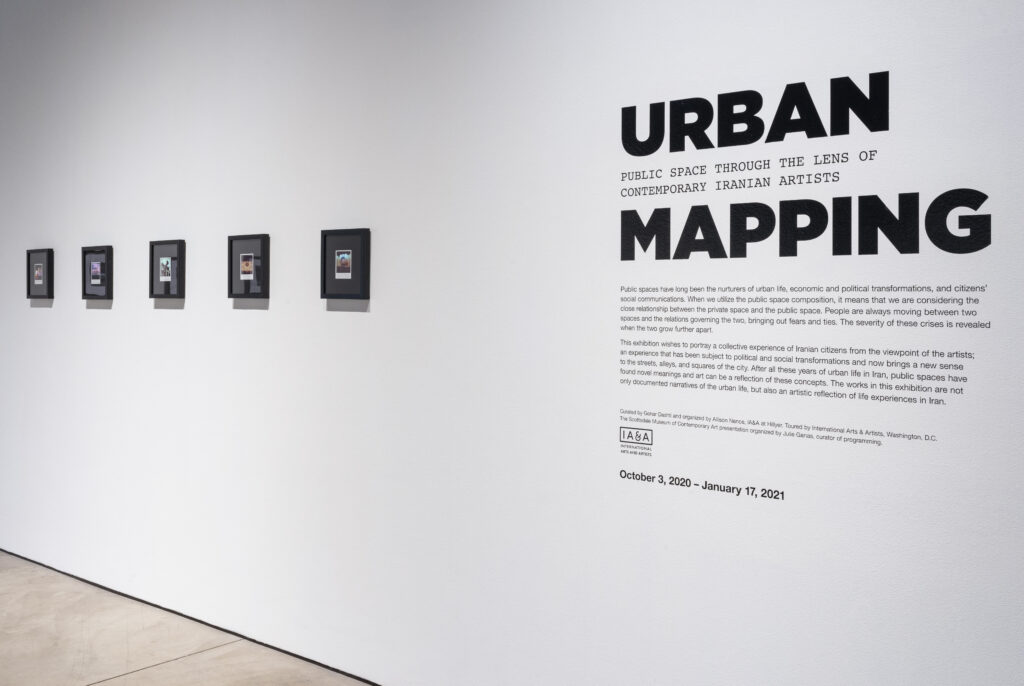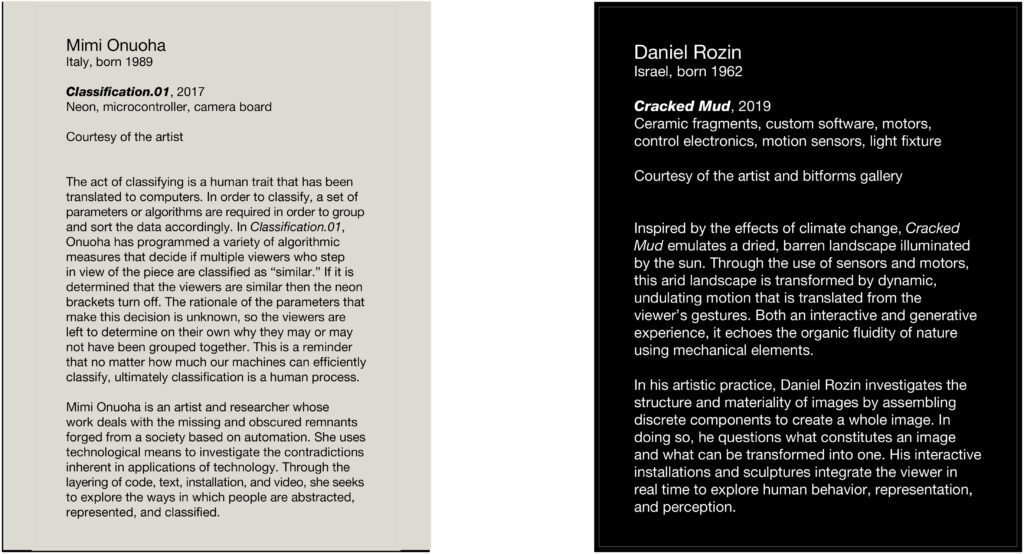The artworld has a language of its own that can be tricky to keep up with, even for us! We are here to help decipher some of the terms often used and unpack what they mean. So, let’s talk shop!
Didactics
Wall didactics are used in museums to provide additional information about a particular exhibition or artwork. They are typically written by the curator of an exhibition as a means to provide context for the viewer.
The first didactic text a viewer typically sees in an exhibition is the intro panel at the entrance of a gallery, which introduces an exhibition by giving a brief overview of any underlying themes or artistic processes.

Another way didactic text is utilized is on extended labels next to specific artworks. These are labels that include the standard artwork information plus a brief paragraph that gives insight into a specific artwork. The content of an extended label varies depending on the artwork. Sometimes they include historical references, talk about artistic processes, give insight into the artist and their intent, or speak directly about themes or symbols in the artwork.

Didactics are not meant to serve as an interpretation for the viewer, but instead provide contextual information for those that are interested in learning more. Didactics can guide the viewer, but are meant to still give viewers the space to make their own connections to the artworks.
Back to Inspire home.
CONNECTIONS: Spark | Amplify | Immerse
